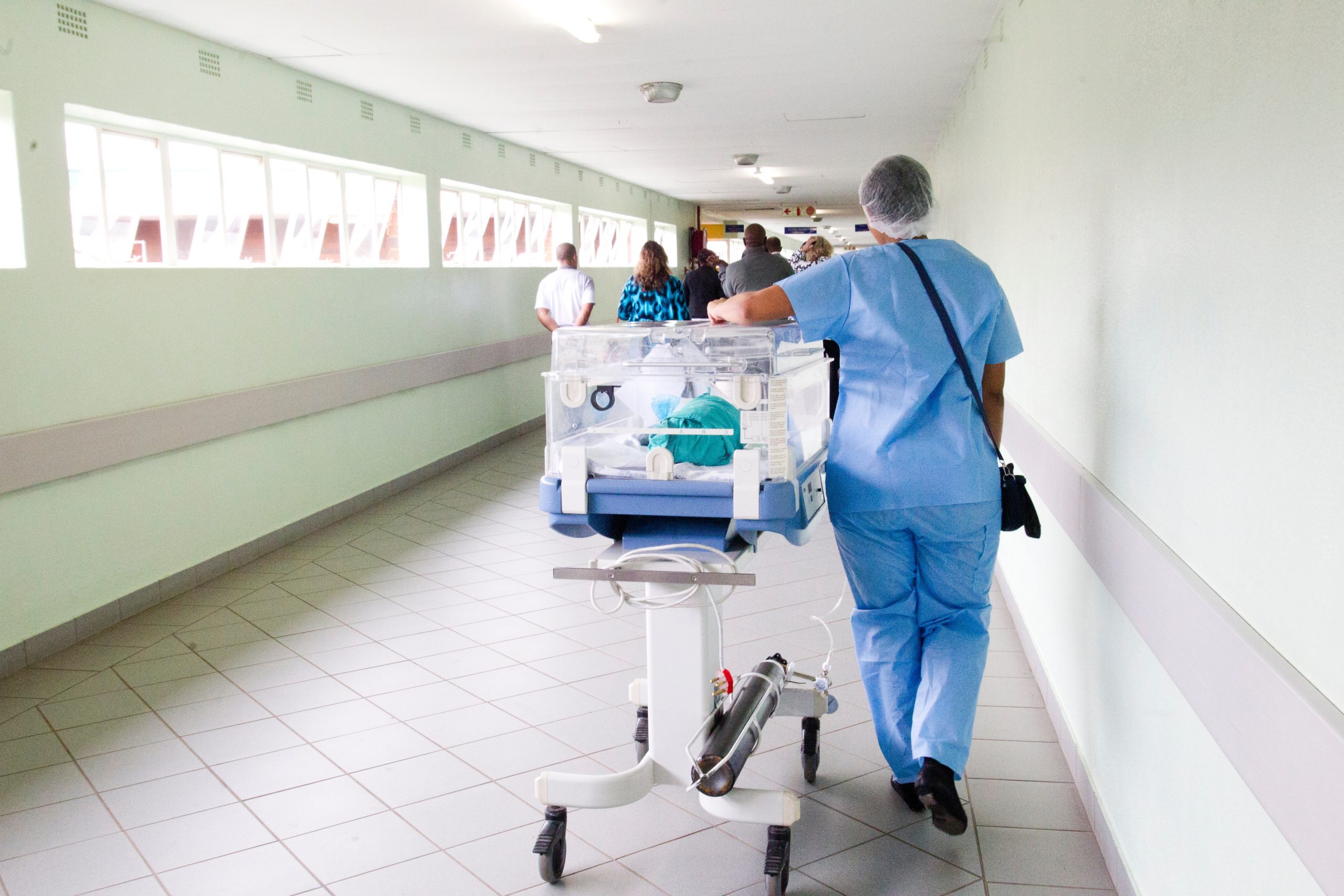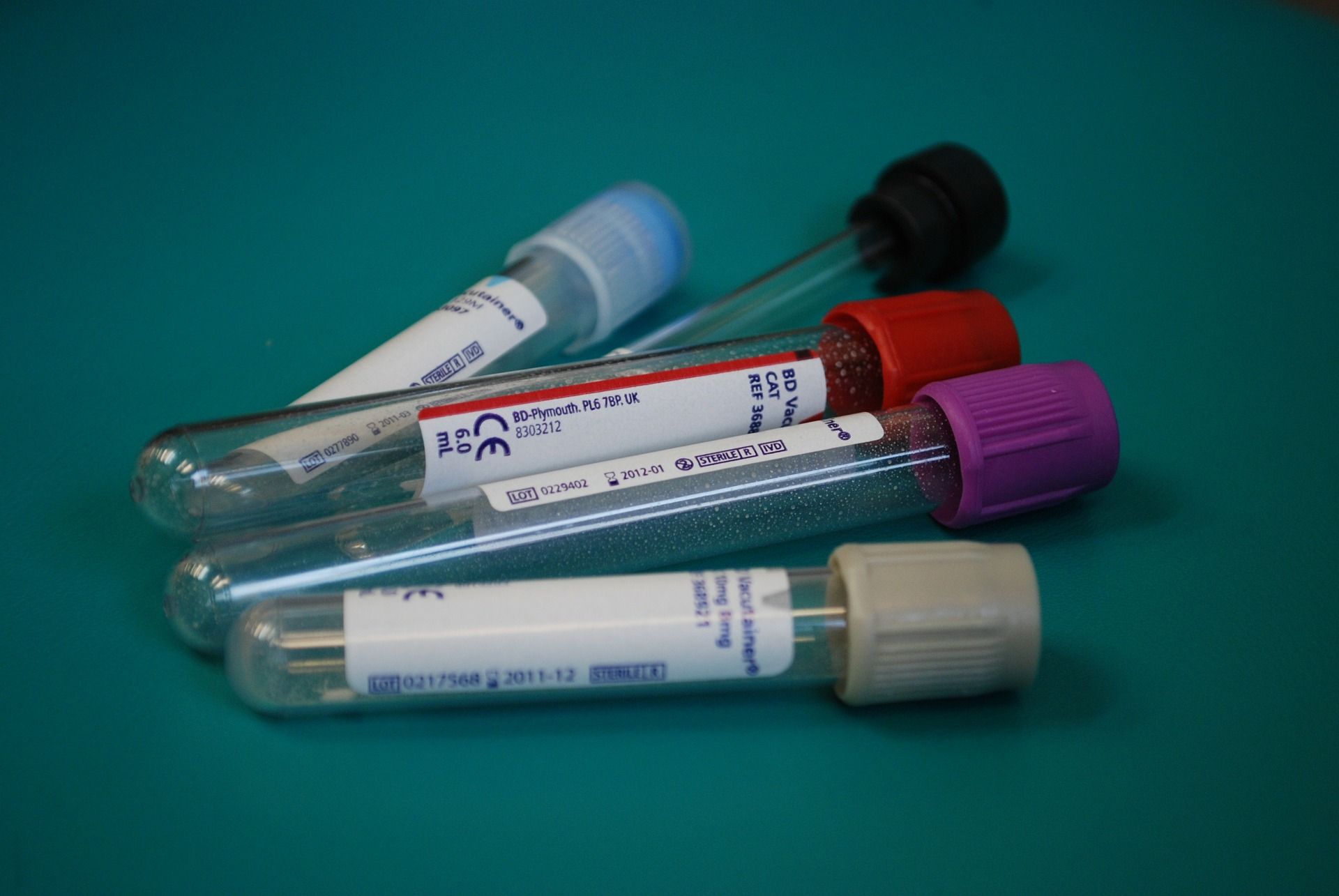HOSPITAL ACQUIRED INFECTION LAWSUITS
Hospital Acquired Infections Attorney
Hospitals are meant to heal, not harm. Yet thousands of patients each year develop serious infections while under hospital care—often due to poor hygiene, unsanitary conditions, or negligence. Known as hospital-acquired infections (HAIs) or nosocomial infections, these illnesses can prolong recovery, increase medical costs, and even lead to life-threatening complications. When medical facilities fail to follow proper safety protocols, patients may be entitled to compensation through a hospital-acquired infection lawsuit.
The Lyon Firm represents victims and families nationwide in claims involving preventable infections, holding negligent hospitals, nursing homes, and healthcare providers accountable for lapses in patient safety.
investigating hospital negligence & delayed infection diagnosis cases
At any given time, according to the US Department of Health, about 1 in 25 inpatients have hospital acquired infections, most related to negligent hospital care.
Every day, approximately 40,000 harmful hospital errors occur, many of which are preventable, and the result of staff negligence. Hospitals should be the safest place for sick or recovering patients, however many have become notorious for spreading deadly infections.
According to the U.S. Centers for Disease Control and Prevention (CDC), up to 30 percent of patients in an intensive care unit (ICU) get an infection during a stay.
Particularly dangerous hospital-acquired infections like MRSA, C. Diff, catheter-associated urinary tract infections, and ventilator-associated pneumonia are very common, and may claim the lives of patients. Hundreds of Americans die from hospital-acquired infections each day.
Hospital-acquired infections are far too prevalent and not only a great burden to patients, but also the nation’s health care system. Changes must be made and hospitals and staff must be held accountable for the damage caused by poor procedure and hospital standards.
Joe Lyon is an experienced Medical Malpractice Lawyer who handles hospital acquired infection lawsuits based on an infection misdiagnosis or delay in diagnosis of a hospital acquired infection.
The Lyon Firm can assist plaintiffs find the answers to the important questions that have gone unanswered and seek compensation for medical expenses and other damages.
Hospital Acquired Infections Linked to Negligence
It should be common sense that medical staff would always observe basic health hygiene and routinely wash their hands. However, hands are the most common vehicle for transmission of bacteria, and “horizontal transmission” of infections among hospital and nursing home patients.
Hospital-acquired infections can be caused by viral, bacterial, or fungal pathogens. The most common infections are bloodstream infections (BSI), pneumonia (VAP), MRSA-Staph infections, urinary tract infections (UTI), C. Diff. infections and surgical site infections (SSI).
MRSA-Staph Infection
MRSA (Staph) is an infection caused by a type of Staphylococcus, a bacterium now resistant to a wide list of antibiotics. MRSA is highly associated with infections acquired exclusively in medical facilities like hospitals or nursing homes.
Hospital-acquired MRSA infection is most commonly contracted through direct contact with contaminated hands, contaminated patient linens, and poorly sanitized surgical instruments. MRSA can cause severe problems, such as blood infections.
Nursing negligence and unsanitary conditions are preventable risk factors that can result in malpractice lawsuits. Infections can be serious issues for already vulnerable patients and hospitals have a duty to provide a standard of care.
Surgical Site Infection
Surgical site infections account for about 15 percent of hospital-acquired infections, numbering up to 400,000 cases of infections per year in the U.S. The majority of surgical site infections result from microbes invading a surgical wound at the time of operation.
Most surgical site infections involve MRSA-type bacteria species. Contributing factors to an infection may involve improper hair removal, skin preparation, operating room sterility, antimicrobial choice, bowel preparation regimens, and operative technique. Any failure to follow safe hygienic procedure may result in a dangerous infection.
C. Diff. Infections
Many unsuspecting patients taking antibiotics to treat a bacterial infection end up with a more serious infection. In some hospital patients, antibiotics can trigger a potentially life-threatening infection caused by a type of bacteria called clostridium difficile (C. diff.)
C. diff. is estimated to cause almost half a million annual infections in the United States. The infection can cause many complications, including colitis, a serious inflammation of the colon. In many cases, victims have died within a month of initial diagnosis.
Catheters & UTI Infections
Catheter-associated UTIs are the most common hospital-acquired infections, and result in almost 450,000 cases per year in the United States. Patients admitted for longer hospital stays are at great risk, with the risk of infection increasing by about 5 percent each day a patient is fitted with a urinary catheter. Many UTIs originate from the hands of health care workers during placement or maintenance, infecting patients with various bacteria.
Careful catheter removal and change is necessary to prevent infection. Training staff is essential, and must be directed at sterile insertion technique and maintenance practices. Insertion should always include sterile gloves. About 25-75 percent of UTIs are estimated to be avoidable.
Protocols for removal are generally simple, though studies show fewer than 10 percent of hospitals use catheter removal reminders. Many institutions are also without a monitoring system for urinary catheter duration of use.
Your doctor should carefully consider whether a catheter is necessary and should remove a necessary catheter as soon as possible. To prevent urinary tract infections, doctors and nurses should consider the following:
- Catheters are put in only when necessary and they are removed as soon as possible
- Properly training persons inserting and removing catheters using sterile technique
- Cleaning skin in the area where the catheter will be inserted
- Considering external catheters in men
- Nurses must always clean their hands with soap and water or use an alcohol-based hand rub before and after touching a catheter
- Avoid twisting or kinking a catheter
- Keep the bag lower than the bladder to prevent urine from backflowing
- Empty the bag regularly
Most cases of CAUTI include bacteria or fungi entering the urinary tract through the catheter, causing the infection. Clean insertion, removal techniques, and daily catheter care can help lower the risk of a CAUTI. Catheters should not be left in longer than needed. There are several ways infection can occur during catheterization, including the following:
- A catheter may become contaminated upon insertion
- A drainage bag may not be emptied often enough
- Bacteria from bowel movements may get on the catheter
- Urine in the catheter bag may flow backward into the bladder
- Catheters may not be regularly cleaned

Ventilator-Associated Pneumonia
Ventilator-associated pneumonia (VAP) is a pneumonia caused by poor mechanical ventilation and intubation malpractice. VAP is estimated to cause complications in over 50,000 patients per year in the United States.
Up to a quarter (25 percent) of mechanically ventilated patients develop VAP with aerobic gram-negative bacilli, accounting for the majority of infections. Fungi and Viruses have also been known to cause VAP in some patients.
Most alarmingly, these incidences of infection in medical facilities are increasing year-on-year. Complications of hospital-acquired pneumonia may include lung abscess and thoracic empyema, and in some cases require surgical intervention.
Ventilators can save lives, but may also increase a patient’s risk of acquiring pneumonia while environmental germs enter the patient’s lungs. To prevent ventilator-associated pneumonia, doctors, nurses are urged to heed the following suggestions:
- Keep patient’s bed raised between 30 and 45 degrees unless other medical conditions disallow this position
- Monitor patient’s ability to breathe, and take them off of ventilator as soon as possible
- Clean and disinfect hands before and after touching the patient or the ventilator
- Clean the inside of the patient’s mouth on a regular basis
- Clean or replace equipment between ventilator uses
VAP and other hospital-acquired infections are typically treated with antibiotics. Specific antibiotics used depend on which bacteria are causing an infection. The healthcare provider should be decisive and prompt about treatment and communicate with the patient and family members.
Understanding Hospital-Acquired Infections
Hospital-acquired infections are those that develop at least 48 hours after a patient is admitted. Common HAIs include:
-
Methicillin-resistant Staphylococcus aureus (MRSA)
-
Clostridioides difficile (C. diff)
-
Sepsis or bloodstream infections
-
Pneumonia (especially ventilator-associated)
-
Urinary tract infections (UTIs) linked to catheter use
-
Surgical site infections
CONTACT THE LYON FIRM TODAY
ABOUT THE LYON FIRM
Joseph Lyon has 17 years of experience representing individuals in complex litigation matters. He has represented individuals in every state against many of the largest companies in the world.
The Firm focuses on single-event civil cases and class actions involving corporate neglect & fraud, toxic exposure, product defects & recalls, medical malpractice, and invasion of privacy.
NO COST UNLESS WE WIN
The Firm offers contingency fees, advancing all costs of the litigation, and accepting the full financial risk, allowing our clients full access to the legal system while reducing the financial stress while they focus on their healthcare and financial needs.

Hospital Acquired Infections Risk Factors
Several factors can lead to health care-associated infections, several of which are preventable if hospital management and medical staff take the proper precautions. Some common risks include the following:
- Prolonged use of invasive devices
- Prolonged use of antibiotics
- High-risk procedures
- Immuno-suppression and other unidentified underlying patient conditions
- Insufficient application of isolation precaution
- Misapplied hygienic procedures
- Understaffing
- Overcrowding
- Poor application of basic infection control measures
- Ignoring procedure
- Absence of procedure and policy
Most Common Hospital Acquired Infections
The U.S. Centers for Disease Control and Prevention (CDC) tracks and identify infections that patients are likely to acquire in hospitals and other healthcare settings. According to the CDC, hospital patients will have a good likelihood of developing at least one of the following hospital acquired infections:
- Epidural Abscess
- C. Diff.
- Post-surgical infection
- Hospital-acquired urinary tract infection (HAUTI)
- Ventilator Infection (VAP)
Hospital Acquired Infection Lawsuits
With a thorough investigation, and testimony from experienced medical experts, the Lyon Firm can determine if a patient’s damages are the result of medical malpractice, and the negligence of a hospital and its personnel.
Liability needs to be established, and records may show an unacceptable standard of care. If it is determined that a hospital-acquired infection was preventable, and medical professionals were negligent, the victim will have a good chance to recover costs and damages in a claim.
Aside from the damages to victims and their families, hospital-acquired infections put a strain on the entire healthcare system and state budgets. The majority of these infections are preventable, and health care systems and individuals must be held accountable to make proper changes.
Hospitals and other health care facilities are required to adhere to practices of sterility, but when medical staff fails to follow safe procedures, and fails to protect patients, they must be held responsible for their medical negligence in hospital acquired infection lawsuits.
Modern healthcare facilities can save lives, though at the same time are associated with numerous dangerous infections, some of which are linked to Medical Negligence, and medical devices like catheters or ventilators. Healthcare-associated infections (HAIs) include central line-associated bloodstream infections, catheter-associated urinary tract infections, and ventilator-associated pneumonia.
The CDC publishes yearly reports to help patients and doctors better understand hospital health risks and hopefully to push accountability in the field of healthcare.
HAI surveillance systems like the National Healthcare Safety Network (NHSN) and the Emerging Infections Program Healthcare-Associated Infections Community-Interface (EIP HAIC) have been established to help assess hospital acquired infection prevention progress. The Healthcare associated Infection Data Reports published show the following annual statistics:
- Estimated total number of infections in hospitals: 721,800
- Pneumonia: 157,500
- Gastrointestinal Illness: 123,100
- Urinary Tract Infections: 93,300
- Primary Bloodstream Infections: 71,900
- Surgical site infections from any inpatient surgery: 157,500
- Other types of infections: 118,500
Hospitals and healthcare professionals must take control and prevent healthcare associated infections. Research shows that when healthcare facilities, as well as individual doctors and nurses are aware of infection problems and take steps to prevent them, rates of infection can decrease by more than 70 percent.
Preventing HAIs is possible, but it will take a conscious effort by clinicians and healthcare facilities. Injuries, however, like hospital acquired infections still occur every day, and the only way to recover compensation for medical costs and other damages may be to file a claim against those legally responsible.

Compensation for Infection Victims
Victims of hospital-acquired infections may recover compensation for:
-
Additional medical expenses and extended hospital stays
-
Lost wages and reduced earning capacity
-
Pain, suffering, and emotional distress
-
Long-term disability or disfigurement
-
Wrongful death damages for fatal infections
CONTACT THE LYON FIRM TODAY
Questions about Medical Malpractice
Hospitals, medical staff, nurses and doctors are responsible for providing proper patient care. When management or individuals fail to provide a sufficient level of care, victims may seek legal recourse and file suit against the negligent parties.
Without medical malpractice laws, medical mistakes would go without consequence, patients would be uncompensated for preventable injuries, and medical providers would have less incentive to improve the medical system to prevent future injuries.
Despite the reports discussed above, frivolous claims brought by medical malpractice attorneys and runaway juries have been blamed as causing a medical crisis. There is no medical malpractice crisis, it is simply propaganda created by the U.S. Chamber of Commerce and large insurance companies to pollute the American jury pool and change the law in a manner that is favorable to them and adverse to the average American. And sadly, it has worked.
Currently, 90 percent of juries side with the physician over the patient at trial. As a result, insurance companies are bolder than ever and refuse at times to settle even the most meritorious of cases knowing that the chances of the patient finding a fair and impartial jury is extremely low, especially in more conservative parties of the country such as Hamilton County, Ohio.
The Deficit Reduction Act of 2005 required that conditions be identified that (a) are costly and occur at high rates, (b) are assigned as cases to the Diagnosis-Related Group, and (c) could have ultimately been prevented with appropriate care. These hospital-acquired conditions occur as negligence on the part of hospital staff and often result in a multitude of medical malpractice lawsuits.
Conditions that meet the three requirements for identification:
Many hospitals and physicians are taking proactive approaches to resolve viable medical malpractice claims by approaching patients who do not have legal counsel. The “family meeting” presentation will include deterring patients from seeking legal counsel. This is a very concerning development in the course of medical liability and risk management.
We strongly advise patients not to engage in “family meeting” settlement negotiations without an experienced medical malpractice lawyer present. Hospitals and physicians have lawyers who are specialized in medical malpractice claims advising them on how to approach the case, and it is only fair that the patient is afforded the same benefit of qualified counsel.
The Lyon Firm has decades of experience representing patients harmed by medical negligence and unsafe hospital conditions. The firm’s approach combines compassionate client care with aggressive legal advocacy to achieve meaningful results.
Why clients trust The Lyon Firm:
-
Proven record in complex medical malpractice litigation
-
Collaboration with leading medical and infectious disease experts
-
Transparent communication and personalized representation
-
Contingency fee structure—no payment unless a recovery is made
Legal Grounds for a Hospital Infection Claim
A successful lawsuit requires showing that the infection was preventable and caused by negligence. The legal claim may be based on:
-
Medical malpractice: Failure to follow accepted standards of infection prevention.
-
Negligent supervision or staffing: Inadequate training or oversight of healthcare workers.
-
Product liability: Defective medical devices or sterilization equipment.
-
Premises liability: Unsanitary hospital conditions or contamination.
Proving these claims often involves reviewing infection control records, hospital policies, and laboratory data. The Lyon Firm works with infectious disease specialists and medical experts to identify lapses in care and build strong, evidence-based cases.
- Birth Trauma
- Prescription Error
- Failure to Diagnose
- Retained Foreign Objects
- Emergency Room Negligence
- Surgical Errors
- Unnecessary Surgery
- Wrong Site Surgery
- Anesthesia Mistakes
- Robotic Surgery
- Radiology Error
- Lasik Surgery
- Testosterone Therapy
- Opioid Overdose
- Anoxic Brain Injury
- Air Embolism
- Blood Incompatibility
- Fertility Clinics
- Intubation Injury
- VA Negligence
- Medication Errors
-
-
Answer a few general questions.
-
A member of our legal team will review your case.
-
We will determine, together with you, what makes sense for the next step for you and your family to take.
-